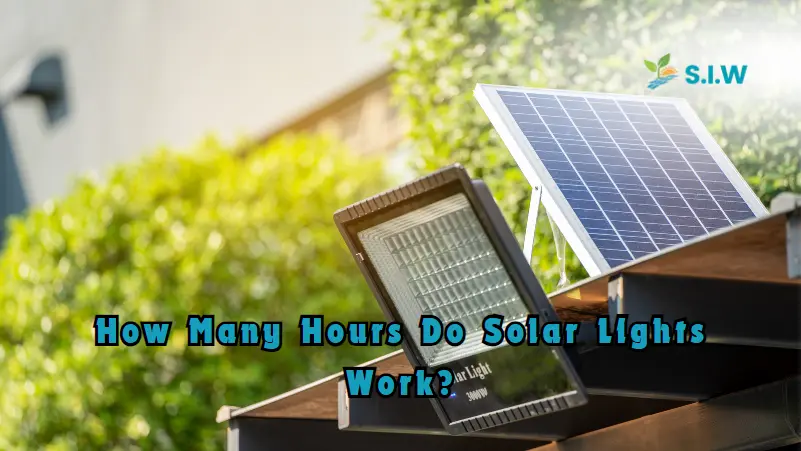Solar lights have become an essential feature for outdoor spaces, offering environmentally friendly illumination without the need for electricity. Understanding how long solar lights can operate is crucial for effective installation and usage. In this comprehensive guide, we’ll dive deep into the factors influencing solar light performance and the realistic hours they provide consistent light.
Factors That Influence Solar Light Operation Time
1. Solar Panel Efficiency
The efficiency of the solar panels plays a pivotal role in determining how long solar lights work. High-quality panels with higher efficiency ratings can capture more sunlight during the day, even in low-light conditions. This results in better battery charging and longer illumination hours at night.
2. Battery Capacity
Most solar lights use rechargeable batteries, typically lithium-ion or NiMH (Nickel-Metal Hydride) batteries. The size of the battery, measured in milliampere-hours (mAh), directly influences how many hours of light the solar unit can provide. Larger battery capacities store more energy, leading to longer operating times.
3. Geographical Location and Sunlight Exposure
The number of sunlight hours varies by location, which significantly impacts solar light performance. In areas closer to the equator, where sunlight exposure is more consistent throughout the year, solar lights tend to work longer. Conversely, regions with shorter days or frequent cloud cover may see reduced performance.
4. Seasons and Weather Conditions
Solar lights operate optimally in clear, sunny conditions. In winter months or during periods of overcast or rainy weather, the amount of sunlight the panels can collect decreases, reducing their operating hours. Dust, snow, and debris on the panels can further impact their ability to charge efficiently.
5. Brightness Settings
Many solar lights come with adjustable brightness settings. While high brightness modes provide more illumination, they consume battery power faster, reducing the number of operational hours. On the other hand, using the lights on a lower setting can extend their duration significantly.
6. Type of LED Bulbs
The efficiency of the LED bulbs used in solar lights also affects how long they can work. Modern LED technology offers brighter lights that use less power, allowing solar lights to run longer on a single charge.
Average Operational Hours for Solar Lights
Solar lights typically operate between 6 to 12 hours depending on the factors mentioned above. Here’s a breakdown of expected operational hours under various conditions:

Battery Life and Longevity
Rechargeable batteries in solar lights typically last for 1 to 2 years, depending on usage and environmental conditions. Regular maintenance, such as cleaning the solar panels and ensuring proper placement, can help extend both the battery life and the overall performance of solar lights.
Maximizing the Operating Hours of Solar Lights
To get the most out of your solar lights, it’s important to ensure optimal conditions for their operation. Here are some practical tips:
1. Proper Placement
Ensure that solar lights are placed in areas that receive direct sunlight for most of the day. Avoid placing them in shaded areas or near objects that may obstruct sunlight, such as trees or buildings.
2. Regular Maintenance
Clean the solar panels regularly to remove dust, dirt, and debris. This ensures maximum exposure to sunlight and helps improve charging efficiency. During winter months, brush off snow and ice to prevent reduced charging.
3. Using Low Brightness Mode
While it’s tempting to use the brightest setting for maximum illumination, consider using a lower brightness mode for extended operational hours. Many solar lights offer a range of brightness settings that allow for energy-efficient operation.
4. Seasonal Adjustments
In regions with significant seasonal changes, consider moving solar lights during winter to areas that receive more sunlight. This can help maintain operational hours despite shorter days and weaker sunlight.
Types of Solar Lights and Their Expected Operational Hours
1. Solar Path Lights
These lights are typically designed to guide walkways and paths. They are equipped with small solar panels and low-power LEDs. On average, solar path lights work for around 8 to 10 hours, depending on sunlight exposure and battery size.
2. Solar Security Lights
Solar security lights are equipped with motion sensors and high-brightness LEDs. Due to their brighter light output and intermittent use, they usually last 6 to 8 hours on a single charge.
3. Solar Garden Lights
Used for decorative purposes, solar garden lights often come with lower brightness and smaller batteries. They can operate for 8 to 12 hours under optimal conditions.
4. Solar Flood Lights
Designed to provide large areas of bright illumination, solar flood lights typically consume more energy. As a result, they tend to last 6 to 8 hours per night.
Conclusion
Solar lights are an efficient and eco-friendly lighting solution, providing reliable illumination for outdoor spaces. The number of hours solar lights can work depends on several factors, including the quality of the solar panels, battery capacity, geographical location, and weather conditions. With proper maintenance and usage, these lights can provide extended operational hours, making them a valuable addition to any outdoor area.
By understanding these factors and optimizing the placement and settings of solar lights, users can maximize their performance and enjoy longer-lasting illumination.








